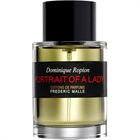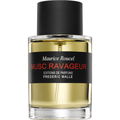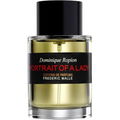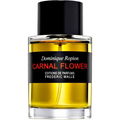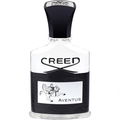01/23/2025

Ch03np
6 Reviews

Ch03np
Helpful Review
10
Redefinitions and reexaminations
Perhaps I can understand why Uncut Gem was so universally panned. Ambrocenide is a particularly strong aromachemical that often blunts every composition it’s in, reduces the beauty of materials to a smudge of whiteness. Woody ambers have this effect when overdosed in compositions. We often think of Sauvage Eau de Toilette when we think of oppressive synthetic compositions, but a better example would be Instant Crush, where various aspects of the composition are completely dominated by the combination of saffron-vanilla-amber to make a scent that is linear and blurry. Some people don’t mind this, probably. We’ve seen many famous compositions in recent times with huge doses of amberwoods (L'Immensité, Y Eau de Parfum, Layton, so on), so people clearly gravitate towards it.
And yet, here we are. Commercial? Is Uncut Gem really commercial? Where are the accolades from “the masses?” Where are the fragrance influencers, the magazines and the publications that push, applaud, commend this fragrance? What was feared by various reviewers did not happen–Malle did not become “more commercial” thanks to this scent. No, other things happened instead: Portrait of a Lady Eau de Parfum became sweeter, jammier, more gourmand; Musc Ravageur Eau de Parfum leant harder and deeper in vanillas and sugar; Acne Studios par Frédéric Malle appeared with a gummy bear base of fruity, hazy textures. See? Even Malle knows that gourmands, ethyl maltol and sugar and more sugar is the future.
Uncut Gem, in such a sense, is therefore a curious creation. It comes on the tail end of an era dominated by cleanliness and metallic notes. It arguably book-ends it entirely. Unsweet, bitter, serious. It is here that I’d like to assert that Uncut Gem is an example of a postmodern creation.
Modernism is well-documented in the fragrance world. We can even look back to the early 2000s at what Comme des Garçons was creating: Comme des Garçons 2, Comme des Garçons 2 Man, Wonderwood–all of these fragrances defied convention at the time with their radical approaches to compositions. What if ISO-E Super was overdosed and brought to the limelight? What if note convention centred around bizarre objects instead? Snuffed out candles, calligraphy ink, lightbulbs and xerox machines? But even then, Comme des Garçons’ idea of modernism aged. We nowadays understand and see the compositions for what they are, monolithic but ultimately snapshots of time. Perhaps not as enduring as we all hoped it would be. The vision of a future marble white, abstract and jagged.
This is only to paint a picture of modernism. Postmodern ideas often criticise and refine the modern ones of yesteryear. Some examples? Perhaps Parle Moi’s collection of revisiting scents and renewing them, like Papyrus Oud/71 did with Gucci pour Homme (2003) Eau de Toilette. How Massimo Dutti redid Gucci pour Homme II Eau de Toilette with Mineral Grey. Le Parfum de Thérèse being a seminal work of Roudnitska’s works up until that point. Time ages the artist and brings new insight, whether it is from new experience or rumination. Delphine Jelk looks at Habit Rouge Eau de Toilette and sees the future in Habit Rouge Parfum. Francis Kurkdjian looks at Dior Homme Parfum (2014) and shows us the future in Dior Homme Parfum (2024), for better or for worse.
Uncut Gem looks at Malle’s line. Not just Musc Ravageur Eau de Parfum and Dans Tes Bras, but also Angéliques sous la Pluie, Geranium pour Monsieur. It also is a retrospective on commercial and high-end releases alike. It is a synthesis of various ideas and themes, but also a critique of ambrocenide. What if ambrocenide was dirtied up by labdanum? What if it was fluffier, softer, like a bubble or a woolly warmth that surrounds you? What if ginger was woody, unsweetened, bitter almost in combination with angelica? Most importantly, what if ambrocenide stood on its own instead of reducing the rest of the composition?
Perhaps that’s why I have a soft spot for Uncut Gem, ultimately. It’s a somewhat cerebral fragrance that asks questions, asks the user to reevaluate the previous decade or two in experiencing it. Also, it’s very utilitarian. It isn’t repulsive or extremely challenging for a passerby to smell, and it could probably be worn in most seasons, in most scenarios. Good job, Mr. Roucel.
And yet, here we are. Commercial? Is Uncut Gem really commercial? Where are the accolades from “the masses?” Where are the fragrance influencers, the magazines and the publications that push, applaud, commend this fragrance? What was feared by various reviewers did not happen–Malle did not become “more commercial” thanks to this scent. No, other things happened instead: Portrait of a Lady Eau de Parfum became sweeter, jammier, more gourmand; Musc Ravageur Eau de Parfum leant harder and deeper in vanillas and sugar; Acne Studios par Frédéric Malle appeared with a gummy bear base of fruity, hazy textures. See? Even Malle knows that gourmands, ethyl maltol and sugar and more sugar is the future.
Uncut Gem, in such a sense, is therefore a curious creation. It comes on the tail end of an era dominated by cleanliness and metallic notes. It arguably book-ends it entirely. Unsweet, bitter, serious. It is here that I’d like to assert that Uncut Gem is an example of a postmodern creation.
Modernism is well-documented in the fragrance world. We can even look back to the early 2000s at what Comme des Garçons was creating: Comme des Garçons 2, Comme des Garçons 2 Man, Wonderwood–all of these fragrances defied convention at the time with their radical approaches to compositions. What if ISO-E Super was overdosed and brought to the limelight? What if note convention centred around bizarre objects instead? Snuffed out candles, calligraphy ink, lightbulbs and xerox machines? But even then, Comme des Garçons’ idea of modernism aged. We nowadays understand and see the compositions for what they are, monolithic but ultimately snapshots of time. Perhaps not as enduring as we all hoped it would be. The vision of a future marble white, abstract and jagged.
This is only to paint a picture of modernism. Postmodern ideas often criticise and refine the modern ones of yesteryear. Some examples? Perhaps Parle Moi’s collection of revisiting scents and renewing them, like Papyrus Oud/71 did with Gucci pour Homme (2003) Eau de Toilette. How Massimo Dutti redid Gucci pour Homme II Eau de Toilette with Mineral Grey. Le Parfum de Thérèse being a seminal work of Roudnitska’s works up until that point. Time ages the artist and brings new insight, whether it is from new experience or rumination. Delphine Jelk looks at Habit Rouge Eau de Toilette and sees the future in Habit Rouge Parfum. Francis Kurkdjian looks at Dior Homme Parfum (2014) and shows us the future in Dior Homme Parfum (2024), for better or for worse.
Uncut Gem looks at Malle’s line. Not just Musc Ravageur Eau de Parfum and Dans Tes Bras, but also Angéliques sous la Pluie, Geranium pour Monsieur. It also is a retrospective on commercial and high-end releases alike. It is a synthesis of various ideas and themes, but also a critique of ambrocenide. What if ambrocenide was dirtied up by labdanum? What if it was fluffier, softer, like a bubble or a woolly warmth that surrounds you? What if ginger was woody, unsweetened, bitter almost in combination with angelica? Most importantly, what if ambrocenide stood on its own instead of reducing the rest of the composition?
Perhaps that’s why I have a soft spot for Uncut Gem, ultimately. It’s a somewhat cerebral fragrance that asks questions, asks the user to reevaluate the previous decade or two in experiencing it. Also, it’s very utilitarian. It isn’t repulsive or extremely challenging for a passerby to smell, and it could probably be worn in most seasons, in most scenarios. Good job, Mr. Roucel.
2 Comments






 Top Notes
Top Notes  Ginger
Ginger Angelica root
Angelica root Bergamot
Bergamot Mandarin orange
Mandarin orange Nutmeg
Nutmeg Heart Notes
Heart Notes  Labdanum
Labdanum Frankincense
Frankincense Leather
Leather Magnolia
Magnolia Vetiver
Vetiver Base Notes
Base Notes  Ambrocenide®
Ambrocenide® Musk
Musk

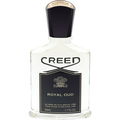

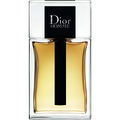
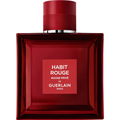
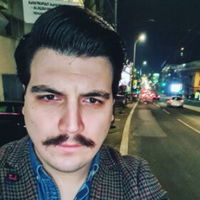

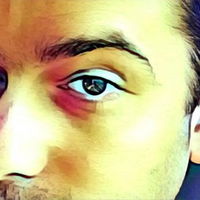





 Ch03np
Ch03np DevilJuice
DevilJuice Rodrigo23
Rodrigo23 BoBoChamp
BoBoChamp Patj1994
Patj1994 Voldage
Voldage Ninamariah
Ninamariah Aldest
Aldest Nachoarg
Nachoarg NicheOnly
NicheOnly
